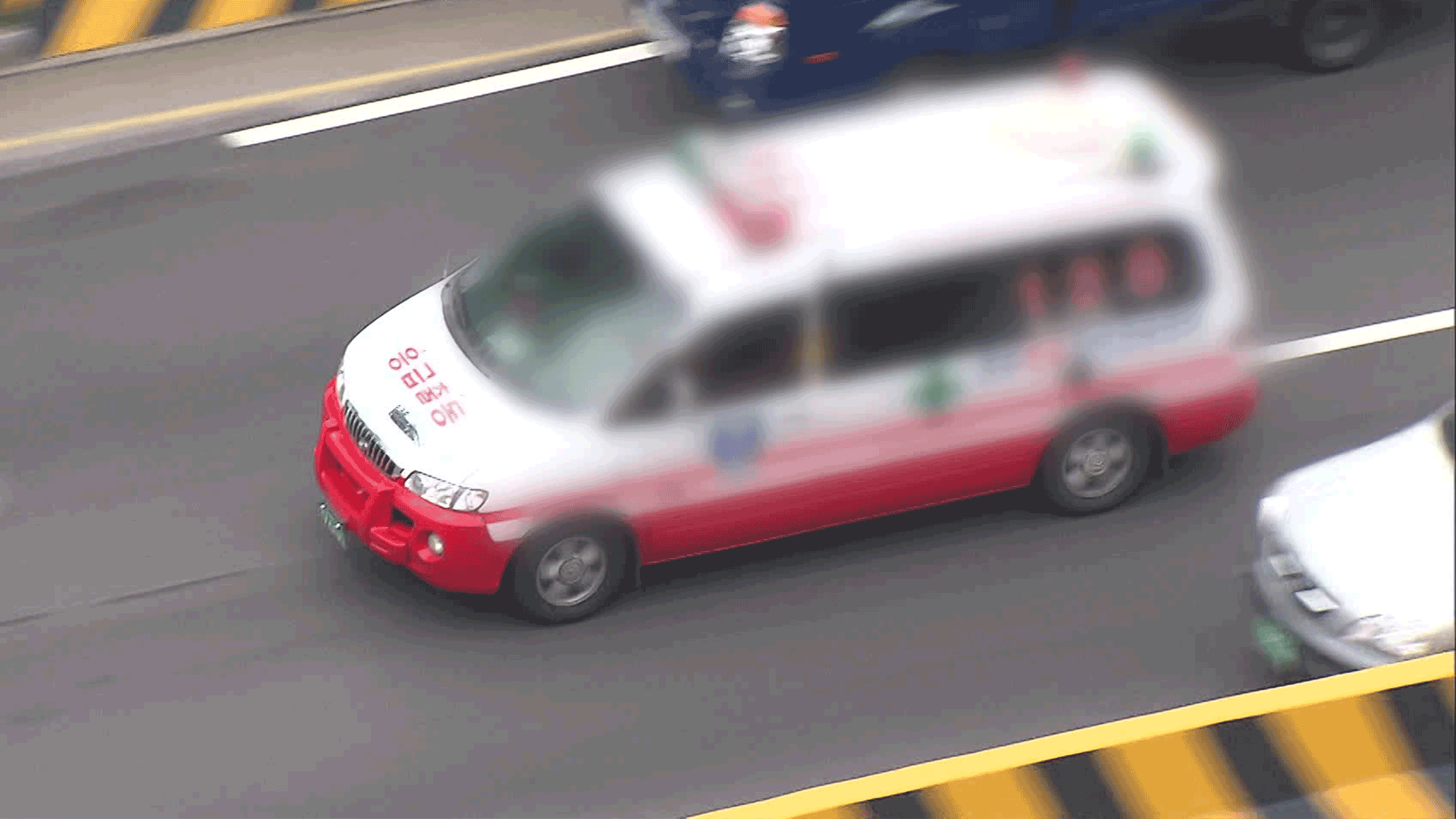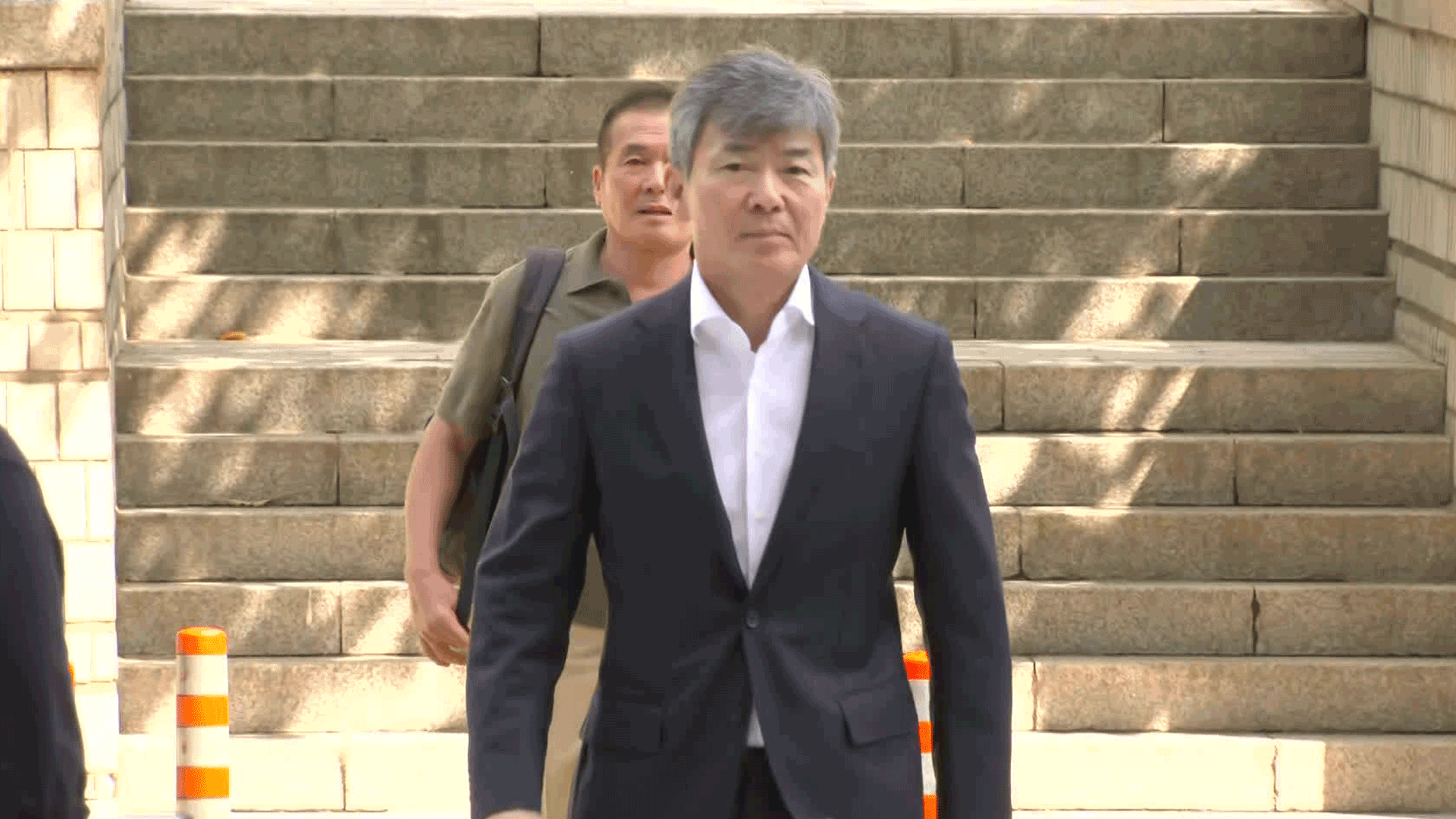[Anchor]
The issue of private ambulances racing down the road with sirens on, even when there is no emergency, has been consistently pointed out.
Until now, enforcement has been difficult, but from now on, local governments across the country will check for fake siren runs based on GPS driving records.
Jin Sun-min reports.
[Report]
A private ambulance is racing down the road at midnight, blaring its siren and flashing its emergency lights.
The destination is not a hospital, but a parking lot.
There were no emergency patients.
Another private ambulance.
This time, it was driving with its siren on without a patient on board when it collided with another vehicle.
It then hit a woman in her 70s who was walking on the sidewalk, leaving her in critical condition.
[KBS Economic Concert/March: "This private ambulance was confirmed to have been driving with its siren on without any emergency patients."]
The illegal racing of private ambulances is not a new issue, but unlike 119 ambulances, enforcement and control have been challenging.
Accordingly, local governments across the country will directly inspect the GPS-based driving records of private ambulances this month, following guidelines from the Ministry of Health and Welfare.
Until now, only the driving record books have been checked, but in the future, they will compare the actual GPS data with the records to catch false operations.
Simply comparing records may have limitations in determining whether they actually transported emergency patients and operated according to regulations.
[Ministry of Health and Welfare official: "It seems that it will be used for reference purposes, and on-site inspections will need to be conducted in parallel. Our officials will go out to each local government, and we are also considering going out together in specific areas."]
If emergency lights are turned on without an emergency, a fine of up to 200,000 won can be imposed, and using an ambulance for private purposes can result in a prison sentence of up to one year.
There are discussions about strengthening on-site enforcement, but this could delay the transport of emergency patients.
This is KBS News, Jin Sun-min.
The issue of private ambulances racing down the road with sirens on, even when there is no emergency, has been consistently pointed out.
Until now, enforcement has been difficult, but from now on, local governments across the country will check for fake siren runs based on GPS driving records.
Jin Sun-min reports.
[Report]
A private ambulance is racing down the road at midnight, blaring its siren and flashing its emergency lights.
The destination is not a hospital, but a parking lot.
There were no emergency patients.
Another private ambulance.
This time, it was driving with its siren on without a patient on board when it collided with another vehicle.
It then hit a woman in her 70s who was walking on the sidewalk, leaving her in critical condition.
[KBS Economic Concert/March: "This private ambulance was confirmed to have been driving with its siren on without any emergency patients."]
The illegal racing of private ambulances is not a new issue, but unlike 119 ambulances, enforcement and control have been challenging.
Accordingly, local governments across the country will directly inspect the GPS-based driving records of private ambulances this month, following guidelines from the Ministry of Health and Welfare.
Until now, only the driving record books have been checked, but in the future, they will compare the actual GPS data with the records to catch false operations.
Simply comparing records may have limitations in determining whether they actually transported emergency patients and operated according to regulations.
[Ministry of Health and Welfare official: "It seems that it will be used for reference purposes, and on-site inspections will need to be conducted in parallel. Our officials will go out to each local government, and we are also considering going out together in specific areas."]
If emergency lights are turned on without an emergency, a fine of up to 200,000 won can be imposed, and using an ambulance for private purposes can result in a prison sentence of up to one year.
There are discussions about strengthening on-site enforcement, but this could delay the transport of emergency patients.
This is KBS News, Jin Sun-min.
■ 제보하기
▷ 카카오톡 : 'KBS제보' 검색, 채널 추가
▷ 전화 : 02-781-1234, 4444
▷ 이메일 : kbs1234@kbs.co.kr
▷ 유튜브, 네이버, 카카오에서도 KBS뉴스를 구독해주세요!
- GPS used to catch fake siren runs
-
- 입력 2025-08-05 23:49:53

[Anchor]
The issue of private ambulances racing down the road with sirens on, even when there is no emergency, has been consistently pointed out.
Until now, enforcement has been difficult, but from now on, local governments across the country will check for fake siren runs based on GPS driving records.
Jin Sun-min reports.
[Report]
A private ambulance is racing down the road at midnight, blaring its siren and flashing its emergency lights.
The destination is not a hospital, but a parking lot.
There were no emergency patients.
Another private ambulance.
This time, it was driving with its siren on without a patient on board when it collided with another vehicle.
It then hit a woman in her 70s who was walking on the sidewalk, leaving her in critical condition.
[KBS Economic Concert/March: "This private ambulance was confirmed to have been driving with its siren on without any emergency patients."]
The illegal racing of private ambulances is not a new issue, but unlike 119 ambulances, enforcement and control have been challenging.
Accordingly, local governments across the country will directly inspect the GPS-based driving records of private ambulances this month, following guidelines from the Ministry of Health and Welfare.
Until now, only the driving record books have been checked, but in the future, they will compare the actual GPS data with the records to catch false operations.
Simply comparing records may have limitations in determining whether they actually transported emergency patients and operated according to regulations.
[Ministry of Health and Welfare official: "It seems that it will be used for reference purposes, and on-site inspections will need to be conducted in parallel. Our officials will go out to each local government, and we are also considering going out together in specific areas."]
If emergency lights are turned on without an emergency, a fine of up to 200,000 won can be imposed, and using an ambulance for private purposes can result in a prison sentence of up to one year.
There are discussions about strengthening on-site enforcement, but this could delay the transport of emergency patients.
This is KBS News, Jin Sun-min.
The issue of private ambulances racing down the road with sirens on, even when there is no emergency, has been consistently pointed out.
Until now, enforcement has been difficult, but from now on, local governments across the country will check for fake siren runs based on GPS driving records.
Jin Sun-min reports.
[Report]
A private ambulance is racing down the road at midnight, blaring its siren and flashing its emergency lights.
The destination is not a hospital, but a parking lot.
There were no emergency patients.
Another private ambulance.
This time, it was driving with its siren on without a patient on board when it collided with another vehicle.
It then hit a woman in her 70s who was walking on the sidewalk, leaving her in critical condition.
[KBS Economic Concert/March: "This private ambulance was confirmed to have been driving with its siren on without any emergency patients."]
The illegal racing of private ambulances is not a new issue, but unlike 119 ambulances, enforcement and control have been challenging.
Accordingly, local governments across the country will directly inspect the GPS-based driving records of private ambulances this month, following guidelines from the Ministry of Health and Welfare.
Until now, only the driving record books have been checked, but in the future, they will compare the actual GPS data with the records to catch false operations.
Simply comparing records may have limitations in determining whether they actually transported emergency patients and operated according to regulations.
[Ministry of Health and Welfare official: "It seems that it will be used for reference purposes, and on-site inspections will need to be conducted in parallel. Our officials will go out to each local government, and we are also considering going out together in specific areas."]
If emergency lights are turned on without an emergency, a fine of up to 200,000 won can be imposed, and using an ambulance for private purposes can result in a prison sentence of up to one year.
There are discussions about strengthening on-site enforcement, but this could delay the transport of emergency patients.
This is KBS News, Jin Sun-min.
-
-

진선민 기자 jsm@kbs.co.kr
진선민 기자의 기사 모음
-
이 기사가 좋으셨다면
-
좋아요
0
-
응원해요
0
-
후속 원해요
0












![[단독] “‘런종섭’은 모욕”이라더니…전임대사 있는데도 긴급 출국](/data/layer/904/2025/08/20250805_90BOlq.png)


이 기사에 대한 의견을 남겨주세요.